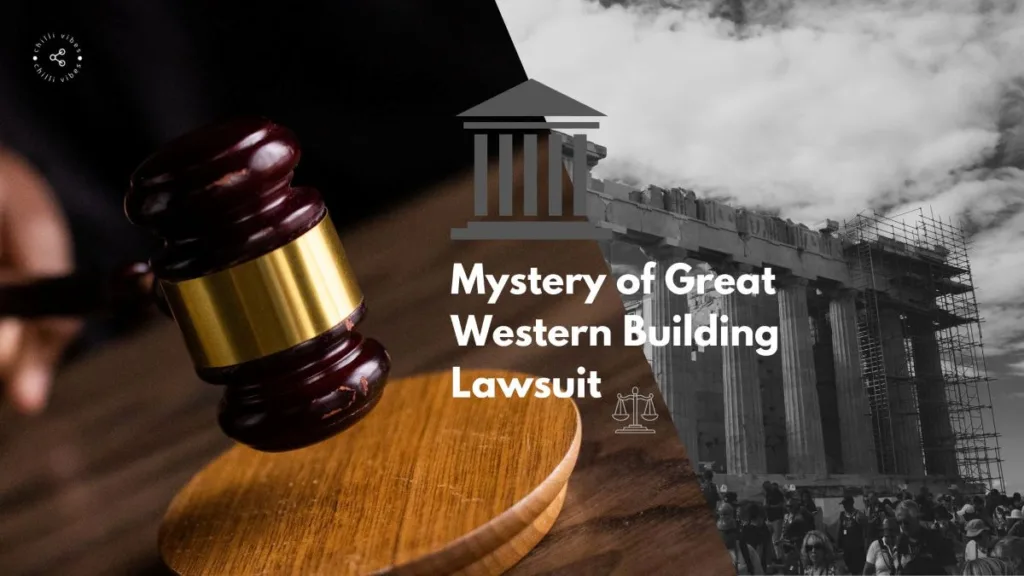The Great Western Buildings lawsuit, a legal battle that has garnered significant attention in recent years, serves as a notable case study in the realm of construction law, corporate responsibility, and environmental stewardship. This article delves into the intricate details of the lawsuit, examining the key players, legal arguments, and broader implications for the construction industry and environmental regulation.
The Rise of Great Western Buildings
Great Western Buildings lawsuit, a once-prominent construction company, was known for its rapid expansion and ambitious projects. Established in the early 2000s, the firm quickly made a name for itself by undertaking large-scale construction projects, many of which involved innovative designs and techniques. However, this rapid growth was not without its controversies, as the company often found itself at odds with environmental regulations and building codes.

The Genesis of the Legal Battle
The lawsuit, officially filed in 2021, was a culmination of years of mounting tensions between Great Western Buildings lawsuit and various stakeholders, including environmental groups, local communities, and government bodies. The crux of the issue lay in allegations that the company had repeatedly violated environmental laws and building codes in its construction practices. These allegations included the improper disposal of hazardous materials, non-compliance with safety standards, and the unauthorized destruction of protected natural habitats.
The Plaintiffs’ Case
The plaintiffs in the lawsuit comprised a coalition of environmental groups, local residents affected by the construction projects, and several government entities. Their argument was multifaceted, focusing on the alleged harm caused by Great Western Buildings’ practices. Key points included:
- Environmental Harm: The plaintiffs provided evidence of the company’s failure to properly handle hazardous materials, leading to pollution and damage to local ecosystems.
- Building Code Violations: There were numerous instances where Great Western Buildings allegedly bypassed safety regulations, posing risks to both workers and residents.
- Lack of Transparency and Compliance: The company was accused of misleading regulatory bodies and failing to obtain necessary permits for certain projects.
The Defense Strategy
Great Western Buildings’ defense hinged on several key arguments. Firstly, they claimed that any violations were unintentional and a result of rapid company growth rather than systemic negligence. They also argued that they had made significant efforts to comply with regulations and that some of the allegations were exaggerated or unfounded.
The Legal Nuances
The case was complex, involving multiple jurisdictions and a variety of legal principles, ranging from environmental law to corporate liability. The interpretation of these laws and how they applied to Great Western Buildings’ operations was central to the lawsuit.
The Trial and Its Revelations
Evidence and Testimonies
The trial brought to light a wealth of evidence, including internal company documents, expert testimonies, and eyewitness accounts. Notably, some of the most damning evidence came from former employees who testified about the company’s internal practices and approach to regulatory compliance.
The Impact of Public Opinion
As the trial progressed, it became a subject of public interest, with media coverage influencing public perception of Great Western Buildings. The company faced increasing scrutiny, not only for its alleged legal violations but also for its overall impact on communities and the environment.
The Verdict and Its Implications
The Outcome of the Lawsuit
After months of deliberation, the verdict was a substantial blow to Great Western Buildings. The company was found liable on multiple counts, including significant environmental violations and breaches of building codes. The court ordered hefty fines and mandated corrective measures to address the damages caused.
Broader Implications for the Industry
The lawsuit set a precedent in the construction industry, highlighting the importance of compliance with environmental laws and building codes. It served as a warning to other companies about the consequences of negligence and non-compliance. Furthermore, the case spurred discussions about the need for stricter regulatory oversight and more robust environmental protections in construction projects.
Conclusion
The Great Western Buildings lawsuit is a landmark case in the realm of construction law and environmental regulation. It underscores the necessity of corporate responsibility and adherence to legal standards. For the construction industry, it is a reminder of the importance of sustainable practices and the potential repercussions of ignoring regulatory requirements. As the dust settles on this legal battle, the lessons learned will undoubtedly shape the future of construction practices and environmental stewardship for years to come.



